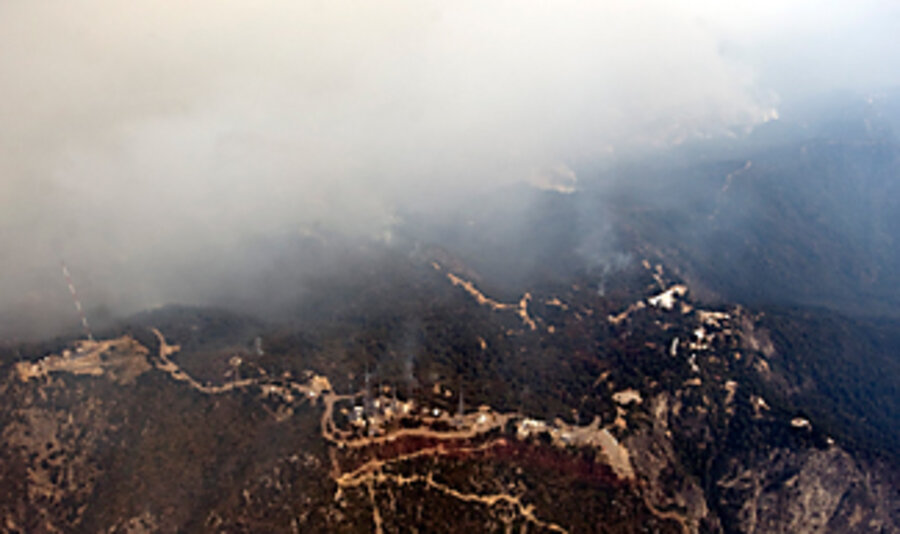After L.A. wildfire, danger of mudslides
Loading...
| Los Angeles
The miles of trees and other hillside vegetation scorched away by the recent wildfire here has left the towns and homes in the area vulnerable to mud and debris slides in the coming rainy season, warns a report from the US Geological Survey (USGS) released Wednesday.
The so-called Station fire blazed across 250 square miles of hillside in L.A. County last month. And without the natural barrier of trees, mud, rocks, and other debris could pour down the steep slopes to cover a football field 60 ft. deep, according to the report.
The USGS study estimated the probability and volume of debris-and-mud flow caused by a three-hour rainstorm – which has 100 percent chance of occurring every year – a one-hour rainstorm, and a 12-hour rainstorm, which is only likely to occur once in two years.
The probability of a dangerous debris flow is greater than 80 percent for a three-hour storm, the report says. Residents and officials should be bracing for significant impacts to homes, buildings, roads, bridges, culverts and reservoirs located in the burned out areas as well as downstream, the report says.
"Because of the fire, there's a significant hazard posed by debris flows and this hazard will occur even in response to a wimpy little storm," USGS research geologist Susan H. Cannon told the Associated Press.
The Los Angeles Dept. of Public Works is working overtime to clean out the several dozen catch basins in the area, and says the work will be completed by Oct. 15.
Debris flows after wildfires have been documented here for decades – a storm in 1934 triggered a mudslide that demolished 480 homes, killed 30 people, and brought a 60-ton boulder out of a canyon.
The USGS report is being used to map and prioritize where the problems would be worst and to help authorities design evacuation routes for residents.
Predicting debris flows and rain storms is difficult so residents should stay informed and take responsibility for protecting their own residences, cars, and families, Ms. Cannon told AP.
"If it starts raining hard and you know you are in a hazardous area, then just take your own initiative and leave," she said.
Flood control basins exist where residential areas meet so-called wilderness areas – known as the urban/wildlands interface. But the steep slopes of mountain canyons are also extremely dangerous.
In 2003, two blazes known as the Old and Grand Prix fires burned more than 150,000 acres in the nearby San Bernardino Mountains. That Christmas, a storm sent enough water, mud, and debris to kill 16 people gathered in a church in a canyon there.
---
Follow us on Twitter.





